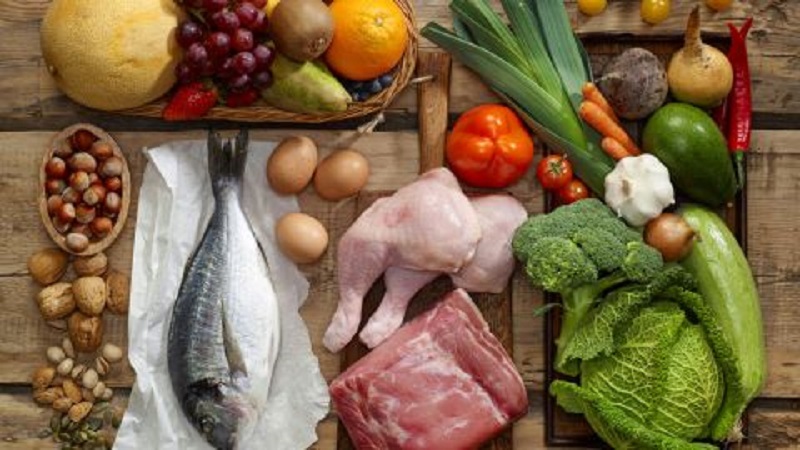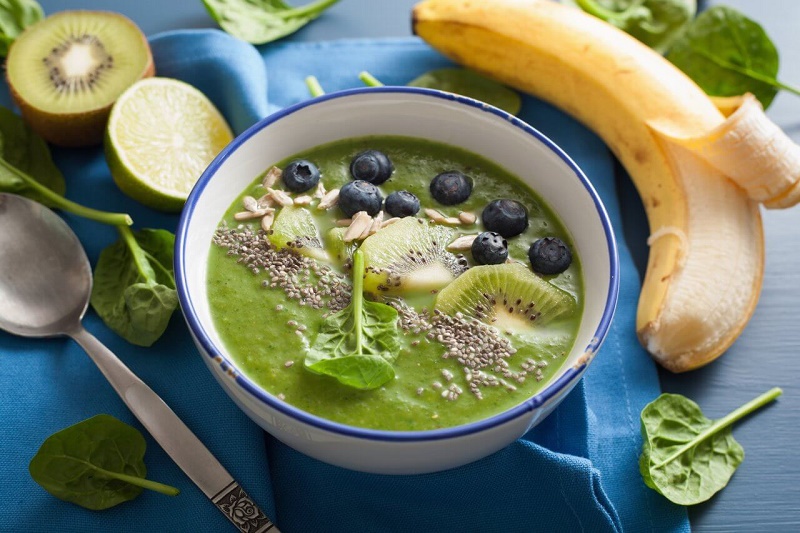The protein diet is a diet that prioritizes the consumption of protein in food, greatly reducing the consumption of the other macronutrients (carbohydrates and fats). It is a Hyperproteic Diet consisting of consuming rich foods in proteins and limiting the consumption of carbohydrates, sugars, and fats. It is used by people who want to increase their muscle mass and by people who want to lose weight.
By increasing the percentage of proteins and reducing the consumption of carbohydrates, we usually lose weight. The carbohydrates that we eat and do not consume are stored in our body in the form of fat as an energy reserve. Instead, the protein intake provides the muscles the essential amino acids needed to repair. And regenerate after performing strength exercises. It allows the muscles to continue to grow, which increases muscle mass. Continue reading: How to Stop Night Sweat Effectively? Discover The Answer
If this is your goal, we offer you two diets to increase muscle mass; On the one hand, the diet to gain muscle mass, and on the other hand the diet to increase weight and fast muscle mass, which may be of your help.
Protein diet plan

Mainly the meat: Beef, chicken, turkey, pork (the lean parts of the meat that contain less fat ), the fish, the eggs (in this case the clear egg that is where all the proteins are, the yolk contains a lot of fat) ), legumes and low-fat dairy products.
These are basically the most protein foods, but we must also consume less: fruits, vegetables, and cereals to provide a small number of carbohydrates. The ideal would be to consume carbohydrates in the morning because it will provide us with energy that we can consume throughout the day and at meals and dinners consume a higher percentage of proteins.
In the case of fish, it is important that we consume white fish that gives us less fat than bluefish, although it is recommended that we consume at least two servings a week of bluefish because it provides us with very healthy essential acids.
If you still do not know the differences between white and blue fish, here we explain them in depth. Next, we are going to analyze some foods that contain more protein and that are the ones that should not be missing in your diet. Keep reading http://apporello.com/inspiratory-muscle-training-and-chronic-obstructive-pulmonary-disease-therapy/
Percentage of approximate proteins in foods per 100 grams:
- Beef sirloin: 27%
- Chicken breast: 25%
- Turkey breast: 25%
- Milk: 25%
- Cottage cheese: 25%
- Tuna steak: 23%
- Lentils: 22%
- Pork loin: 22%
- Manchego cheese: 22%
- Peas: 22%
- Sardines: 22%
- Seabass: 22%
- Pretty: 22%
- Beans: 21%
- Norway lobster, prawns: 20%
- Chickpeas: 20%
- Broccoli: 19%
- Brussels sprouts: 19%
- Salmon: 19%
- Cod: 19%
- Almonds: 18%
- Pistachios: 18%
- Quinoa: 15%
- Oats: 15%
- Soy: 15%
- Egg white: 15%
Animal or vegetable proteins?
The ideal would be to combine both types of proteins, a healthy ratio would be 60% animal protein and 40% vegetable protein. As proteins of animal origin are of higher biological value.
What does this mean? The biological value is defined as the proportion of protein absorbed by our body is effective, ultimately those of animal origin contain all essential amino acids and have better quality, however, those of animal origin have as a counterpart that we provide more saturated fats and cholesterol than vegetables.
Protein diet to lose weight

Then we will present a 7-day menu, which can serve as a guide to start and get the idea of what it would be like to carry out a protein diet:
DAY 1
Breakfast: Coffee or tea with semi-skimmed milk and bread toast with olive oil.
Lunch: French omelet with 1 tomato.
Food: Chicken Caesar salad with parmesan cheese.
Snack: Crudités of carrot + 4 cashews.
Dinner: Salt sea bass with 2 egg whites to accompany.
DAY 2
Breakfast: Coffee with soy milk and bread toast with olive oil and fresh cheese.
Lunch: Watercress salad with tuna.
Food: Beef steak + 2 baked zucchini.
Snack: An orange + a handful of pistachios.
Dinner: Baked salmon with artichokes with 2 egg whites to accompany.
DAY 3
Breakfast: Coffee or tea with semi-skimmed milk and bread toast with olive oil.
Lunch: 2 egg whites with 2 bacon strips.
Food: Beef sirloin + steamed beans.
Snack: One orange + 6 almonds.
Dinner: Grilled tuna and salad with canons.
DAY 4
Breakfast: Coffee with soy milk and bread toast with olive oil and fresh cheese.
Lunch: A French omelet with 1 tomato.
Food: Chicken fillet and about 10 or 12 brussels sprouts.
Snack: One orange + 6 almonds.
Dinner: Grilled tuna and salad with canons.
DAY 5
Breakfast: Coffee or tea with semi-skimmed milk and bread toast with olive oil.
Lunch: 2 egg whites with 2 bacon strips.
Food: Turkey fillet + 1 eggplant baked.
Snack: One orange + 6 cashews.
Dinner: Cod with tomato + beans.
DAY 6
Breakfast: Coffee or tea with semi-skimmed milk and bread toast with olive oil.
Lunch: A French omelet with fresh cheese
Food: Vegetable salad with vinaigrette + white fish fillet.
Snack: One orange + 6 cashews and two slices of cooked ham.
Dinner: Varied fruits with oat flakes and yogurt.
DAY 7
Breakfast: Coffee or tea with semi-skimmed milk and bread toast with olive oil.
Lunch: 2 egg whites with 2 bacon strips.
Food: Baked chicken with vegetables and quinoa + yogurt.
Snack: An orange + 6 almonds and a piece of fresh cheese.
Dinner : Baked blue fish + sautéed vegetables.
Is the protein diet effective to lose weight?

The protein diet is very effective to lose weight because by reducing the intake of carbohydrates that are the usual source of energy, we are altering the metabolism and forcing our body to use the accumulated fat to transform it into energy.
Also, if we follow a balanced diet rich in animal and vegetable proteins without limiting excessively, the consumption of carbohydrates will become an ideal balanced diet. However it is very difficult to determine by a person if the amount that we are ingesting of proteins, hydrates, etc. is the correct one, for this reason, we should always recommend making this diet under medical supervision.
There are miracle diets and very strict protein diets that are not the most recommended for health, since they exaggeratedly restrict carbohydrates, eliminating them almost in their entirety; as is the case of the zero carbohydrate diet, of which we inform you in a link.
At present there are many protein diets, we recommend taking a look at these:
- Scarsdale Diet
- Egg white diet
- Dukan Diet
Pros and cons of making a protein diet

It is a diet with high satiating power: there is a debate about the reason for that feeling of satiety that some attribute it to a stability of blood sugar; since if there are no glycemic imbalances, cravings or pecking are reduced. Others, however, attribute it to the fact that the intake of many proteins causes the celery to secrete fewer appetite hormones.
The proteins are essential for growth, development, and support for the immune system. Likewise, it is important to keep in mind that the consumption of proteins will not let us lose muscle mass, but fat.
It can cause discomfort and difficulties in the digestive tract if an additional amount of fiber is not added to the high protein diet since high protein products are usually low in fiber.
The main problem with protein diets is dehydration. Carbohydrates usually retain water and by seriously reducing their intake, we can become dehydrated, which is why we should drink water before, during and after exercise and preferably outside of meals.
Keep track of calorie

We must keep track of calorie consumption because they are generally products with a high caloric intake and we must try not to overdo it, as well as monitor fat intake and opt for lean meats.
This type of diet can raise cholesterol, as well as generate kidney problems arising from the work that the kidneys must do to cleanse themselves.
At the time of weight loss is a very effective system, but if it is true at the time you change your habits towards a more balanced diet in which you eat more carbohydrates, the body will begin to reserve all these hydrates and as a consequence, you will gain weight.
Therefore, this type of diet is questioned because it does produce a rapid weight loss, but not gradual and sustainable over time. These diets have a high rebound effect, meaning that when you abandon them and change the dietary guidelines you begin to recover the lost weight in a matter of a short time. This effect, known as the yo-yó effect, can be avoided with simple tricks, in the link we inform you of all the secrets. You can not lose this!
Sometimes, it is difficult to increase protein intake in the diet so you can help with the shakes, then we offer the best natural and homemade protein shakes, which will help you increase protein intake in the diet. And the best part is that you can make them yourself, with natural ingredients.
The basis of these phases is to establish clear patterns of restriction of carbohydrates, and establish guidelines for food reintroduction so that it does not mean an increase in weight. So that we can understand it clearly, it is a calendar that establishes when we can reintroduce the food according to the achievements obtained with respect to weight loss.
Phases of the protein diet and dietary guidelines

Phase 1: Weight loss
In this phase we aim to reach the weight loss that we consider necessary, that is, reach our ideal weight. For this, it will be necessary to restrict carbohydrates and consume only bread or cereals for breakfast.
During the course of this phase, we will introduce progressively from the second week, a portion of healthy carbohydrates such as rice or whole grain pasta.
We will maintain a limited intake of carbohydrates to achieve rapid weight loss.
Phase 2: Consolidation
Once we have reached our ideal weight, this phase will help us to gradually reintroduce carbohydrates and fats progressively to avoid the rebound effect. During this phase, we will go little by little making the diet more balanced since we will normalize the consumption of carbohydrates.
To introduce carbohydrates we will progressively increase each week by 5% more each week. We must always keep in mind that we must choose the healthiest hydrates with the lowest caloric load.
During the consolidation of the weight, we will play with a margin of 2 kilos, since the weight can be varied by different factors.
Phase 3: Maintenance
We will begin this phase when we stay one month in the consolidation of the peso. During this phase, we will establish a maximum of three servings per week of pasta. Adapting them to our level of physical exercise and our daily caloric expenditure, making it as close as possible to avoid being reserved in the form of grease.
This phase of protein diet will help us maintain our ideal weight. And change towards a healthier and more balanced diet progressively. Since as we have mentioned the excessive intake of proteins can have consequences in our body and without risk of weight gain.
Read also: Top 10 List of Health Insurance Companies in the USA




